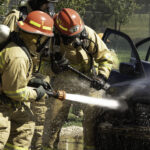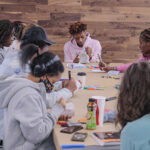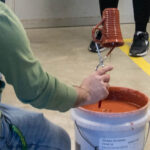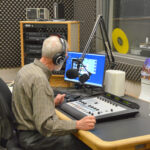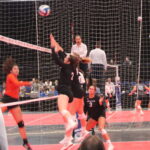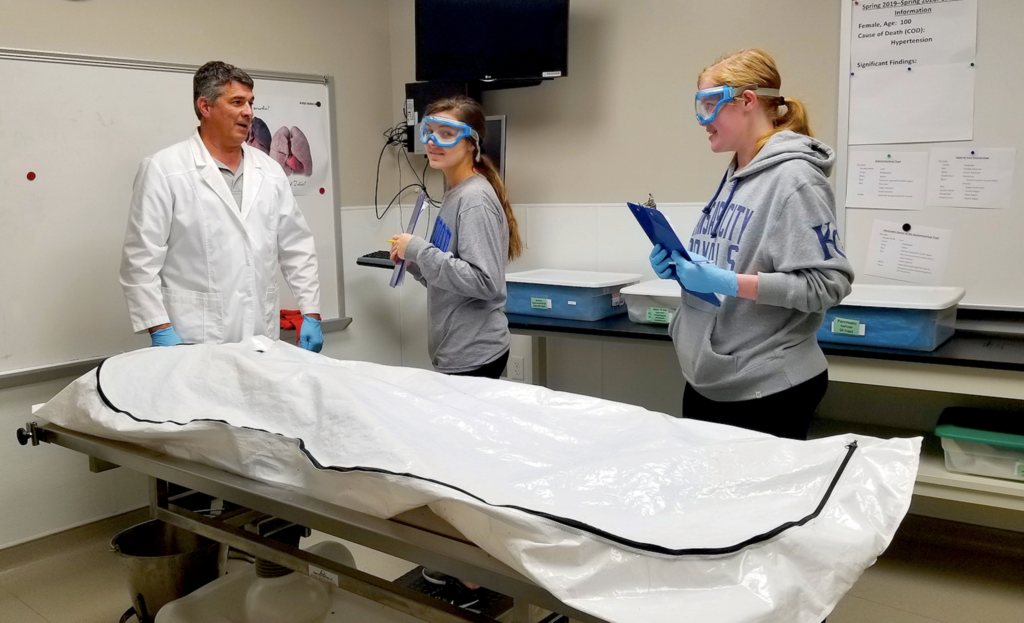
Even after death, one person’s contribution to society continues on. The cadaver lab at Kirkwood Community College is where Anatomy and Physiology students spend much of their time. Students enrolled in these classes learn about the structures of the human body in the most hands-on way possible.
According to Kirkwood Community College Anatomy and Physiology faculty Dr. Nick Sagan, “Kirkwood has housed a cadaver lab for about 30 years. Every year Kirkwood receives two donors from the University of Iowa. In addition to these male and female donors, Kirkwood has a collection of more than 50 diseased human organs and 20 human plastinated organs that are displayed during labs.”
“The cadaver lab at Kirkwood allows professors to train health professionals in a unique way that no other community college in Iowa can do. While other community colleges offer ‘virtual labs’ or dissection of cats and rats, Kirkwood offers human cadavers and human organs for training health professionals.”
Dr. Nick Sagan, Anatomy & Physiology
Dissection of the cadavers is not required as part of the anatomy and physiology classes but students may volunteer to help Sagan dissect cadavers outside of class hours.
During class hours, students may study organs, structures, muscles, veins and bones that have been dissected to be more visible for learning.
An instructor can tell a student the function of the special C-shaped cartilage only found in the trachea but examining the C-shaped cartilage while feeling the rings and the texture allows a student to understand the physiology of that structure. Students are then able to observe first hand exactly why the C-shaped cartilaginous rings are incomplete.
A legal document signed by a person before death allows the donation of their body to the University of Iowa cadaver program but after cadavers spend a year at Kirkwood, they are returned to the University of Iowa to be cremated.
Kirkwood is the only community college in Iowa to have a cadaver lab. In 2018, Kirkwood offered 50 sections of Human Anatomy and Physiology classes. This allows about 1,200 students to work in the cadaver lab. All of these students used the cadaver during the lab portion of their course as part of their journey toward becoming health professionals.
According to Sagan, colleges that do not house a cadaver lab use dissection of cats to teach anatomy. To students who struggle with the idea of using a human cadaver to learn anatomy, Sagan said, “The person that donates their body to science made this decision. It was their choice. They wanted to do this. They knew what they were doing. They want people to learn, discover, feel, touch, hold (human specimens) … and be a smarter person because of it. It was their decision to do this, which makes it easier for me as opposed to using a cat or rat where it wasn’t that animal’s choice to be dissected. It’s a real gift that people are giving to us that want to become professionals to be able to learn.”
He added, “To me, it’s not the person anymore that’s on the table, it’s more the shell of that person. To me, a person is their personality and feelings and emotions – that kind of thing. And all of that is gone. We are seeing what’s left after the person is gone. It’s just the shell.”
Sagan further explained, “The cadaver lab at Kirkwood allows professors to train health professionals in a unique way that no other community college in Iowa can do. While other community colleges offer ‘virtual labs’ or dissection of cats and rats, Kirkwood offers human cadavers and human organs for training health professionals. The benefit of seeing, holding and learning from the real organs teaches students the exact size, shape, structure and function of the organs in the patients they will be helping in the real world. It is very powerful to be able to study human specimens. For example, during a heart lab, students can see the following: bypass surgery, valve replacement surgery, artificial pacemaker, congestive heart failure, myocardial infarction.”
He added, “From student reactions and responses, seeing and holding these hearts, helps them understand and remember the causes and cures for each diseased heart. More importantly, we believe this helps them to be a better health professional.”
Sagan said that in addition to the 1,200 pre-health professionals that directly use the anatomy and cadaver lab, “Kirkwood hosts many other groups to help them succeed in their field of study or to make a career choice. … Kirkwood Community College has made a commitment to the Anatomy lab and the cadaver lab. The recent renovation doubled the size of both labs.”
He said, “As the need for health professionals continues to grow, so does the need for institutions to provide a meaningful, innovative, and relevant experience for students in this field. Kirkwood’s anatomy department believes the cadaver lab is an integral part of their curriculum and a reason Kirkwood graduates so many successful health professionals.”
Categories: Feature

